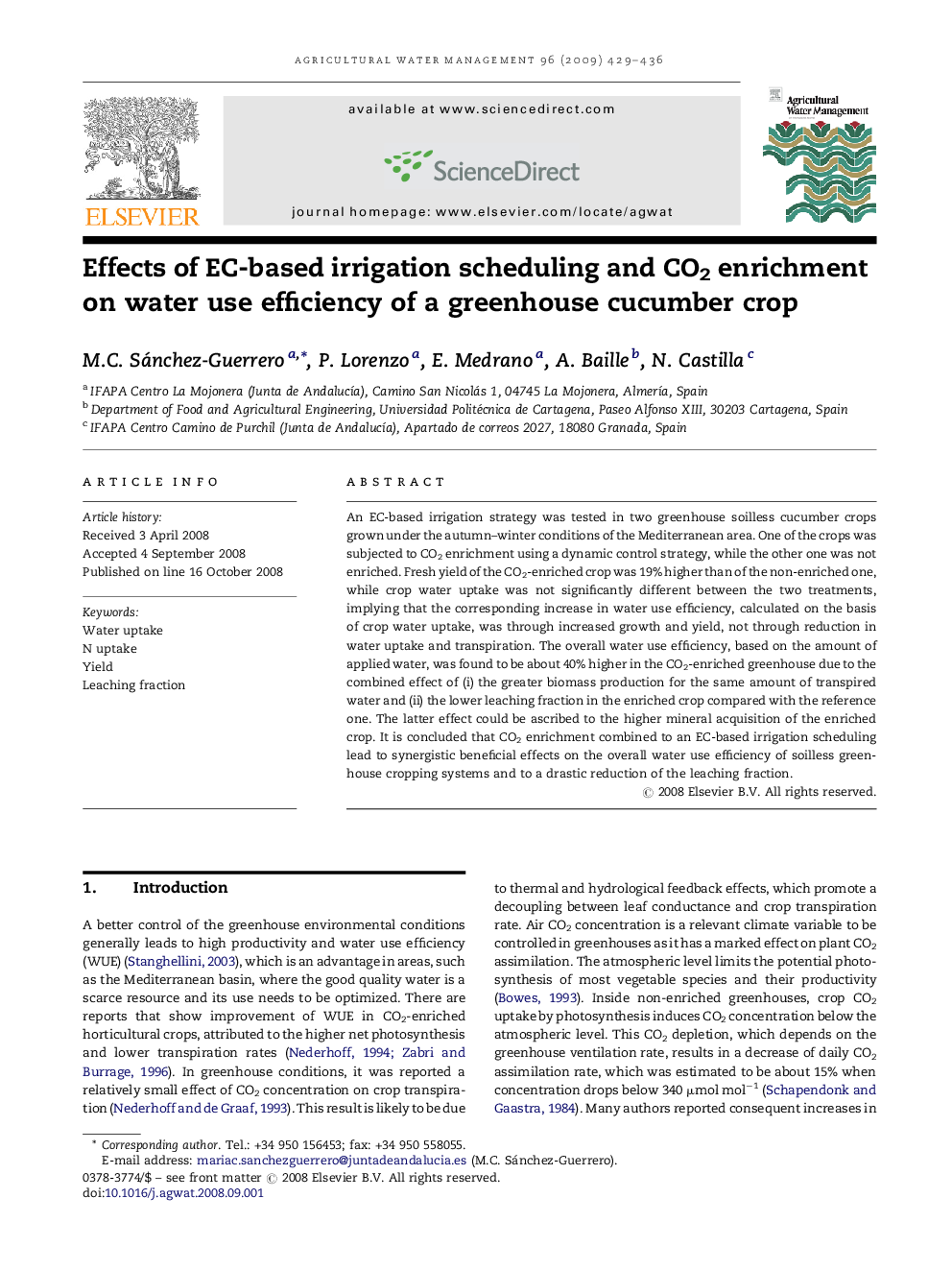| Article ID | Journal | Published Year | Pages | File Type |
|---|---|---|---|---|
| 4479859 | Agricultural Water Management | 2009 | 8 Pages |
An EC-based irrigation strategy was tested in two greenhouse soilless cucumber crops grown under the autumn–winter conditions of the Mediterranean area. One of the crops was subjected to CO2 enrichment using a dynamic control strategy, while the other one was not enriched. Fresh yield of the CO2-enriched crop was 19% higher than of the non-enriched one, while crop water uptake was not significantly different between the two treatments, implying that the corresponding increase in water use efficiency, calculated on the basis of crop water uptake, was through increased growth and yield, not through reduction in water uptake and transpiration. The overall water use efficiency, based on the amount of applied water, was found to be about 40% higher in the CO2-enriched greenhouse due to the combined effect of (i) the greater biomass production for the same amount of transpired water and (ii) the lower leaching fraction in the enriched crop compared with the reference one. The latter effect could be ascribed to the higher mineral acquisition of the enriched crop. It is concluded that CO2 enrichment combined to an EC-based irrigation scheduling lead to synergistic beneficial effects on the overall water use efficiency of soilless greenhouse cropping systems and to a drastic reduction of the leaching fraction.
